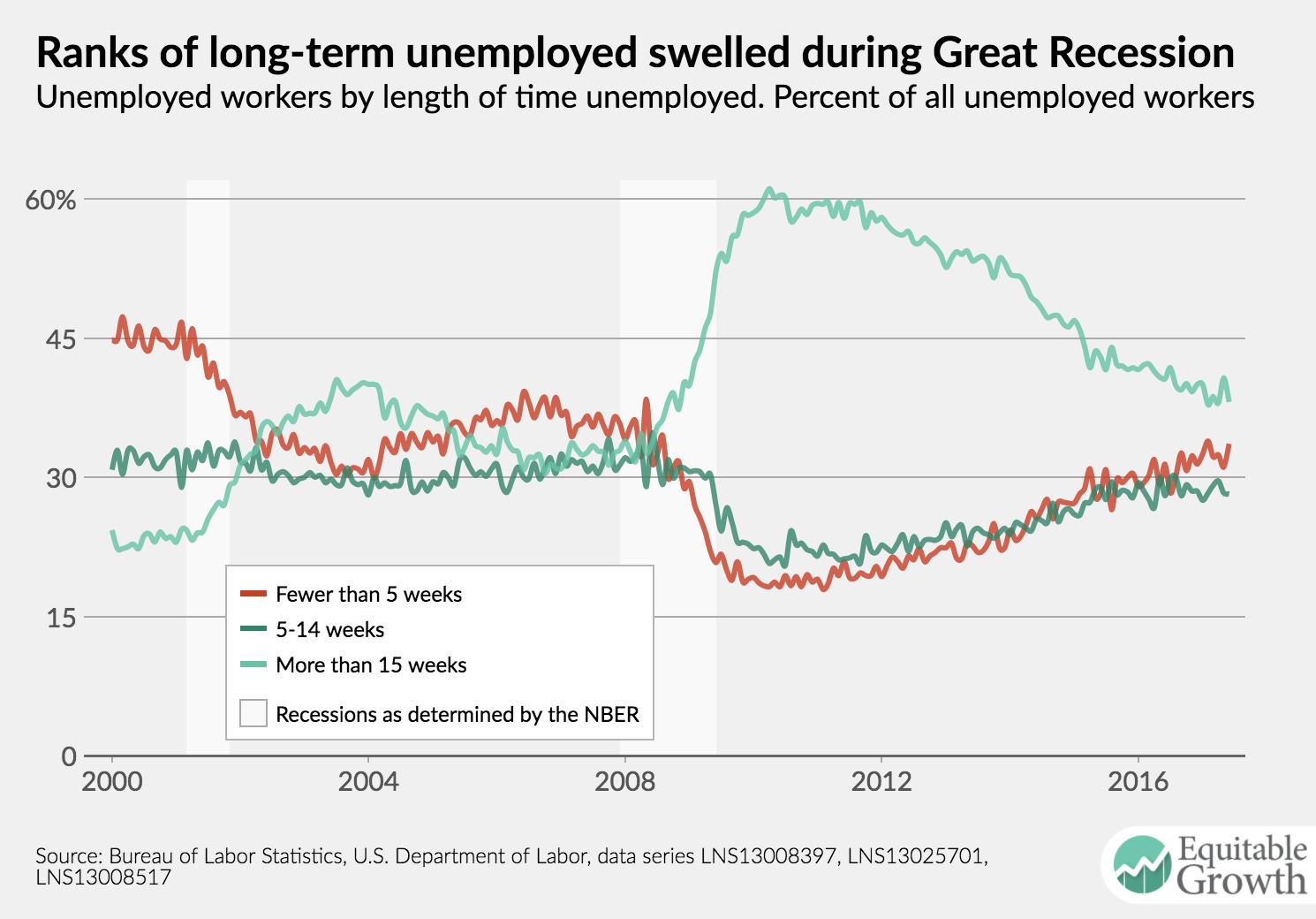Weekend reading: “Post-Jobs Day” edition
This is a weekly post we publish on Fridays with links to articles that touch on economic inequality and growth. The first section is a round-up of what Equitable Growth published this week and the second is the work we’re highlighting from elsewhere. We won’t be the first to share these articles, but we hope by taking a look back at the whole week, we can put them in context.
Equitable Growth round-up
Earlier today the U.S. Bureau of Labor Statistics released new data on the state of the labor market in June. Check out five key graphs from the report chosen by Equitable Growth staff.
Links from around the web
Jenna Smialek writes up new research documenting the sensitivity of employment to economic downturns for white and black workers. Downturns are much worse for the employment situations of African American workers. [bloomberg]
Much has been written about the Phillips Curve and how much changes in unemployment can predict inflation. James Hamilton argues that while the Phillips Curve is useful, other factors are more important for thinking about inflation. And this has long been the case. [econbrowser]
Germany is hosting the Group of 20 meeting this week and looks to defend the international trading system, it’s worth considering a threat Germany poses: its massive current account surplus. [the economist]
The rise of independent contractors in the U.S. labor market poses problems for our current labor law system. Former Wage and Hour Division Administrator David Weil outlines the problems of “misclassifaction” and ways to combat it. [hbr]
What’s behind slow productivity growth? There’s no smoking gun right now, but there’s evidence that slow capital formation—low investment—is at least partially responsible. [liberty street economics]
Friday figure

Figure is from “Equitable Growth’s Jobs Day Graphs: June 2017 Report Edition,” by Equitable Growth
